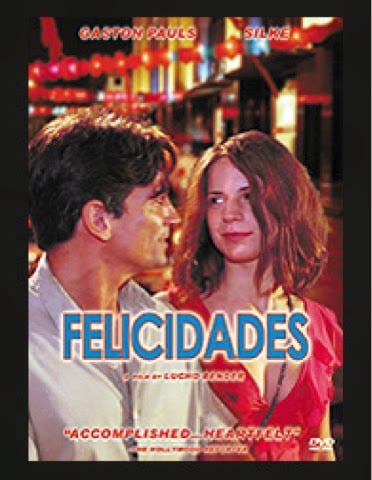
Felicidades (Lucho Bender, 2000)
March 26, 2010
In the Mood for Love (Wong Kar-wai, 2000)
September 28, 2010It is interesting to see such different visions of Shanghaï between Hou’s Flowers of Shanghaï and Chen Kaige’s Temptress Moon, even taking into consideration the twenty years’ difference in the time periods. However, the most striking difference between both films is the representation of women, dictated not only by the time period where the films are based but by the will of the director.
Hou, with the help of his screenwriter collaborator, Chu Tien-wen, takes a feminist stance in his discourse, not only by showing the servitude that women were subjected to but painting an idealized portrait of women in general. Three women serve as conduits for Hou’s criticism of 19th century Shanghaï society, but four represent, as a whole, Hou’s vision of women: Jade (Earth), Crimson (Fire), Pearl (Air) and Emerald (Water). As everything in our world revolves around the four elements, then it is also true in the world of flower houses. Around them, all the men who dine at Pearl’s banquet or visit the other flower girls cannot exist outside of that dynamic. It is the reason there is no outside world in Hou’s film — all the scenes are interiors, only interacting with the outside world in one shot when someone slips in the street during a banquet—, for what life can there be without the elements of life?
Chen Kaige’s perception is a more cynic one. As the principal character, Yu Zhongliang’s experience with women is of a less flattering kind. The most important encounter he has with one is with his sister, who he is forced to sleep with and who constantly abused him when he was a child. Once in Shanghaï, the only way he can carry on a relationship with a woman is through the power that his cons procures him on his victims. So incapable is he to envision a relationship without that imbalance of power, he will prefer to poison the only woman he’s ever loved rather than letting her reject him; in so, he regains power over her as she loses hers (by becoming brain-dead). Women are here depicted as sirens, luring men to their doom with their feminine allures and bewitching voices. For such tragedy, only their presence is necessary, as is demonstrated several times in the movie. Not only will his sister push him into the life he now leads but also the suicide of a victim of his — rich, and so more powerful socially than he is, but in his power nonetheless thanks to his charm — will make him lose that sense of control that buffered his relations to others.
As Hou’s is a historically accurate depiction and critical view of women’s situation of servitude in that period (as studied in the first essay), Kaige’s modern depiction puts women in positions of power. As the heir apparent to the Pang family estate, Ruyi is offered the reins of the family under the restriction that she be aided by her cousin, Duanwu, who will rally to her side against the elders. If in Flowers of Shanghaï, power had to be gained (wrestled away or bought, as in the case of Emerald), in Temptress Moon, it is given to Ruyi without her having to fight for it. And her first act as head of the family shows her desire to eradicate the limitations of the past: there is no need of women in a state of servitude. In her symbolic move, she overthrows the Old World Order that prevails in Hou’s film and leads the way to a feminist revolution.
If, in Flowers of Shanghaï, Emerald only has the power to save herself, in Temptress Moon, Ruyi does so for others, whether they want it or not. The difference between these two visions of women is in the oppositions in the films. Hou confronts his female characters to a male world unwilling to let them evolve; some fold to society’s whim, some prevail to their benefit. Kaige opposes his lead character to women of power which, although paints a historical portrait of women acquiring their rights, also serves to characterize them into almost abject beings. Hou’s is a loving portrayal of women while Kaige’s seems to adopt a distrustful position on the subject.
Bibliography
JONES, K.: Expecting to fly: A City of Sadness in Cinema Scope vol. 2, No. 2, Cinema Scope Publishing, 2000.
- Black Panther: A Perspective - March 20, 2018
- Seven Pounds (Gabriele Muccino, 2008) - May 5, 2015
- Honeymoon (Leigh Janiak, 2014) - January 30, 2015



